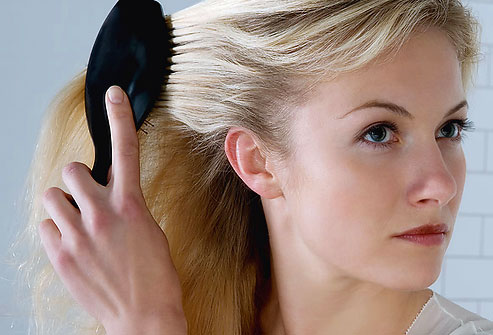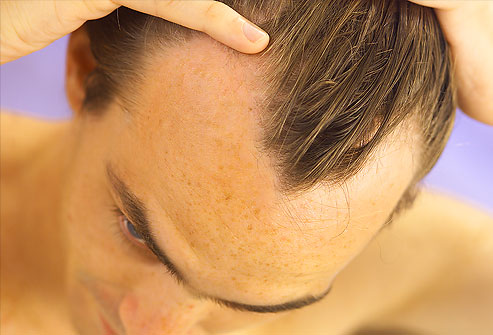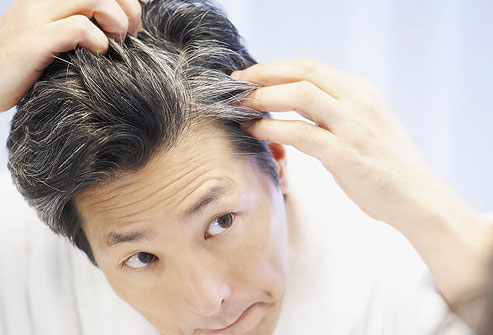29.01.2009
in HAIR LOSS FACTS


Hair loss affects more than 50 million Americans, 20 million of them women. With numbers like that, it’s not surprising that the people behind the bestselling Dummies Books series have taken note. Their comprehensive new book, Hair Loss & Replacement for Dummies, authored by four medical experts on hair loss, has just been published by Wiley. TIME senior reporter Andrea Sachs spoke with one of the authors, hair-transplant surgeon Dr. William Rassman in Los Angeles.
What causes male hair loss?
Ninety-nine percent of men who lose their hair lose it from genetic causes. That means they’ve inherited the pattern from somebody in the family. There’s not a one-to-one relationship: Your parents may have full heads of hair and you may be balding. Or, you may have a full head of hair and your father could be bald and your grandfather could be bald. It comes from both sides of the family, the male and female side, about equally — contrary to the common myth that you inherit it from your mother.

And female hair loss?
About 45 percent of women in their lifetime will end up having some form of hair loss, and it’s mostly genetic in that 45 percent. The rest are related to a variety of medical conditions: iron deficiency, thyroid disease, changes in hormones. When a woman passes into menopause, for example, the estrogen, which supports hair, is withdrawn. You get some genetic holdover like a man would have, where the male hormones that are present in women without the estrogen counterbalance will cause hair loss.
What is the average age when men start losing their hair?
It starts in their twenties. And for the men who have the most severe hair loss, they have a very clear indication of that well before they’re out of their twenties.
And the average age for women?
It’s mostly post-menopausal. A small handful of women will have genetic hair loss in their late teens and early twenties or thirties. These women almost always have a mother and sister or grandmother who has a similar presentation.
How do you assess a patient’s condition?
For a woman, you have to go through a very extensive evaluation, checking out the medicines she is on — birth control pills can induce hair loss. You also do a series of blood tests looking for thyroid disease, iron levels. Dietary causes are amazing causes of hair loss. So women who diet or are bulimic or very thin women who don’t have much meat on their bones may very well be nutritionally deprived, vitamin deprived, and they will end up with hair loss as well.
If I see a man, I almost naturally fall into the mindset that this is male pattern balding. In a woman, I say, my goodness, of the plethora of things that can cause it, what is affecting the hair loss in this woman? It may be more than one thing at a time.
The pattern of loss is different in men and women, isn’t it?
Right. In men, there’s a wreath of hair around the side and back. We call that permanent hair. There is no such thing as completely bald unless they have a disease. That hair will literally last most of the lifetime of the man. Of course, the hair transplant business takes advantage of that. It moves that hair to other parts of the head and the hair continually will always grow no matter where you put it. If you put it on the edge of the nose, it will grow a ponytail.
Unfortunately, that same model doesn’t exist with women. Women can end up with a diffuse hair loss, so the source of donor hair is not going to be there for women. Most women, eighty percent of women, don’t have that wreath.
What’s your opinion about toupees and wigs? Do those exacerbate the problem?
Well, they can. They are good solutions for some people — women who have had chemotherapy, for example. Some women with thinning hair will put on wefts or attachments. It does make the hair look fuller, but it also pulls on the existing hair. That pulling will produce [medical problems] and make a woman balder. So while getting the cosmetic benefits of the weft or attachment, they get the negative side, which is the pulling, and then the exacerbation of hair loss.
Are there any medicines that people commonly take that are factor in hair loss?
Birth control pills are commonly a cause of hair loss. Many psychiatric drugs have hair loss [side effects]. Prozac has that as a side effect. Almost every one of them, if you read the literature. Unfortunately, the amount of ignorance among physicians in dealing with hair loss is massive, so there are very few doctors who really understand the process and they tend to evade the questions that are posed to them.
Are there medicines one can take to help prevent hair loss?
Propecia [finasteride] is a DHT blocker. The body converts testosterone into DHT and it’s DHT, when it’s combined with the genetics of hair loss, that tends to produce balding. So if you can block the DHT, you can literally stop the hair loss as it’s ongoing. In very young men, sometimes you can reverse it. That’s a male-only drug.
Are there any natural remedies?
Not really… Minoxidil [Rogaine] is the only [over-the-counter] medicine that seems to work, and the only medicine really available for females. It does work. But the hair becomes very dependent upon the Minoxidil. If you stop, all the effects are lost.
Is transplant surgery becoming more popular?
Yes, I think it is. I think it’s much more acceptable. You literally cannot tell a patient who has had a hair transplant today. Unlike fifteen years ago, [when] you could always tell because they looked like they had a doll’s head or a cornrow on their head.
Who makes a good candidate for transplant surgery?
There is an issue of supply and demand. If patients have a supply of hair in the wreath, then they can get whatever they want. If they don’t have the supply, then compromises are made. You’ll end up with thinner hair than you would with a full head of hair. But if you’re not balding very greatly, if you’ve only lost the first three inches of hair in the front, for example, that hair could almost always be put back.
Unfortunately, because the wreath of hair is not healthy in many women, there is no place to take normal hair from. So a transplant, for many women, just doesn’t really cut it. Of every hundred women who come to my office with hair loss, less than twenty will be candidates for a hair transplant. It’s almost discriminatory, unfortunately, because of the physiology.
Do you have Hair Loss Problems, read our Hair Loss Help
















